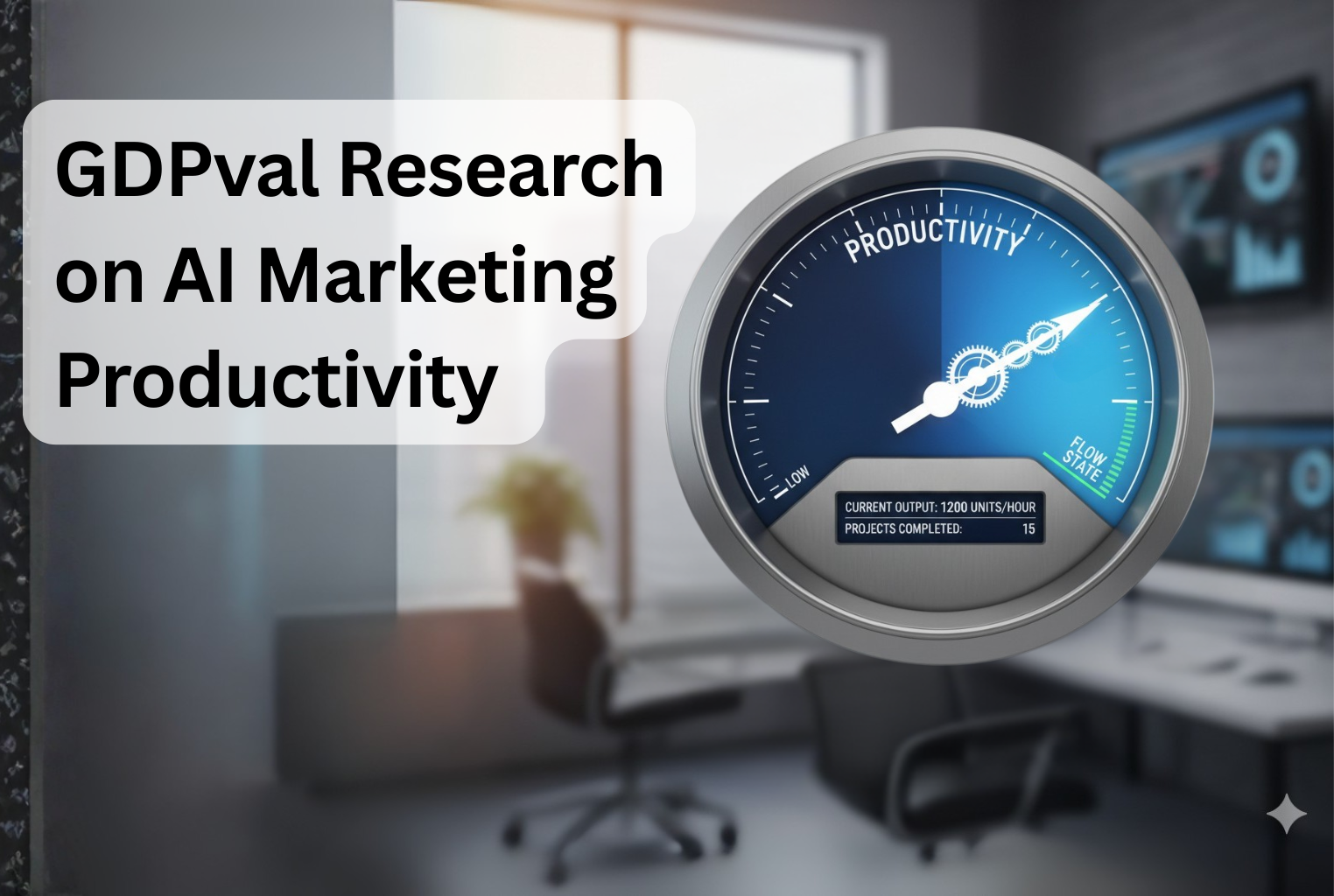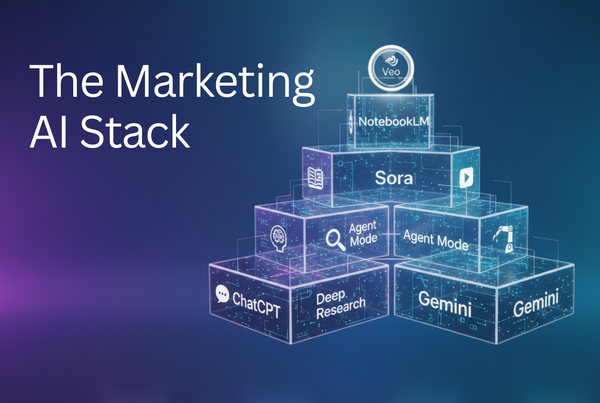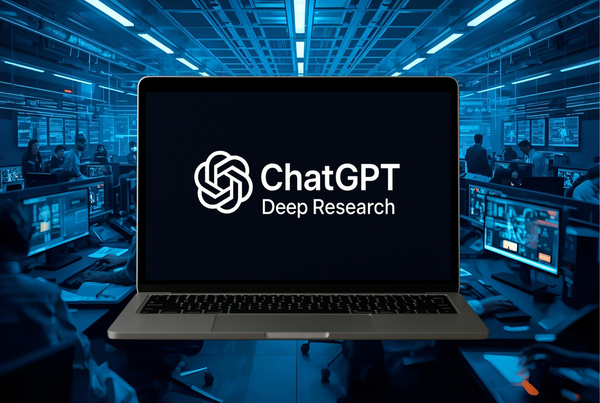What Marketing Leaders Need to Know About OpenAI’s GDPval Research
OpenAI’s new report reveals where AI matches human professionals, and where human judgment, creativity, and context still make the difference. Here’s what marketing leaders need to know.

OpenAI’s new GDPval benchmark is one of the most important AI research releases of the year. It moves beyond abstract tests and hypothetical use cases to measure how well AI models perform real-world professional tasks—the kind that actually drive business value and economic output.
In simple terms, GDPval measures whether AI can do the work people get paid to do—and how close it is to matching or surpassing human experts.
What GDPval Is and Why It Matters
GDPval evaluates AI model capabilities across 1,320 real-world tasks from 44 occupations in the top 9 U.S. economic sectors—from marketing and finance to healthcare, government, and manufacturing. Each task was designed by an experienced professional (averaging 14 years of experience) and graded by peers based on deliverable quality.
Rather than focusing on trivia or reasoning puzzles, GDPval tasks mirror genuine work: presentations, analyses, marketing plans, data sheets, reports, and creative deliverables.
This marks a shift from academic AI benchmarking toward economically meaningful measurement—a view of how AI impacts productivity and value creation.
4 Key Findings
1. AI Models Are Approaching Expert-Level Performance
Frontier models such as GPT-5 and Claude Opus 4.1 now match or outperform human experts in about 48% of evaluated professional tasks. GPT-5 showed particular strength in accuracy and instruction-following, while Claude excelled at visual and formatting-related work such as slide decks and report design.
Model improvement has been steady and roughly linear over time—an indicator that progress continues without slowing.
2. AI Plus Human Oversight Drives Significant Efficiency Gains
When AI models are used with human review—where a professional tries the model’s output first, edits or corrects it if needed—teams can see up to 1.4x faster task completion and 1.6x lower costs compared to unaided experts
The data supports a clear workflow model: AI for first drafts and structure; humans for oversight, context, and refinement.
3. Reasoning and Context Are Critical
GDPval found that model performance improves substantially with greater reasoning depth and stronger scaffolding (structured prompts and stepwise workflows). In one experiment, prompt-tuning improved GPT-5’s results by five percentage points and reduced formatting errors by more than 20%. In short, performance depends not only on the model, but also on how intelligently teams use it.
4. Measuring Quality at Scale Is Becoming Possible
OpenAI trained an automated grading model that matched human expert evaluations 66% of the time—only five percentage points below human-to-human agreement.
This innovation points toward a future where companies can automatically evaluate AI output quality on real-world work, not just test questions.
What AI Does Best — and Where It’s Not There Yet
One of the most revealing aspects of the GDPval study is how clearly it shows where today’s AI models excel and where they still lag behind human expertise. Instead of treating AI performance as a single score, the report breaks down model strengths and weaknesses by task type, revealing a nuanced picture that’s highly relevant to marketing and creative work.
Where AI Excels
In tasks that reward accuracy, consistency, and structure, AI is now remarkably capable. GPT-5, for example, consistently outperformed human experts on assignments that required following detailed instructions, performing calculations, or analyzing structured data. These are the kinds of responsibilities common in areas like analytics, reporting, and financial modeling — work that demands precision rather than interpretation.
For marketing teams, this translates into strong AI performance in data-heavy workflows: analyzing campaign metrics, drafting reports, or creating detailed content calendars. When the problem is clearly defined, the data is available, and the desired format is specified, AI tends to deliver results that rival or even exceed those of experienced professionals.
Another strength lies in formatting and presentation. OpenAI’s study found that Claude Opus 4.1 was particularly adept at producing polished, visually appealing deliverables — everything from PowerPoint decks to formatted PDFs. It handled layout, typography, and document structure with a level of precision that human reviewers sometimes rated above expert-created work. For marketers, that means AI is increasingly reliable at producing the packaging of communication — the visual and structural layer that makes insights client-ready.
AI also showed promise in multimodal work — the ability to synthesize text, spreadsheets, images, and reference documents into coherent deliverables. Many GDPval tasks required models to reference multiple files simultaneously, mirroring how marketers manage creative assets, data sheets, and brand guidelines. The top-performing models demonstrated growing competence at this kind of cross-format reasoning.
Where AI Still Struggles
The report is equally candid about what AI doesn’t do well, at least, not yet. The most frequent reason human experts outperformed models was context and instruction breakdown. Even the most capable models struggled when tasks were vaguely defined or required interpreting an open-ended brief. When the prompt was incomplete or underspecified — for instance, “develop a launch strategy for a new product category” without clear market context — AI often made confident but misguided assumptions.
This weakness has major implications for marketing teams. Strategic, creative, and exploratory work still depends on the human ability to infer nuance, ask clarifying questions, and define the problem before solving it. In other words, AI is great at executing strategy, but not yet at creating it.
The report also highlights a subtler gap in creative judgment and taste. While AI-generated content is increasingly clean, structured, and professional, reviewers frequently noted that it lacked the spark of human originality or emotional intuition. In tasks that required storytelling, persuasion, or a distinctive voice — all essential to branding and campaign development — models produced outputs that were technically sound but often generic. The nuance of tone, timing, and audience empathy remains an area where human marketers have the clear edge.
Finally, there are still execution and formatting errors, especially in complex file types like PowerPoint and PDF. GPT-5, despite its strength in accuracy, sometimes failed to align text properly or maintain consistent visuals across slides. The researchers found that these flaws could often be fixed through better prompting and structured workflows — what they call “scaffolding” — suggesting that the problem lies more in process design than in core capability.





